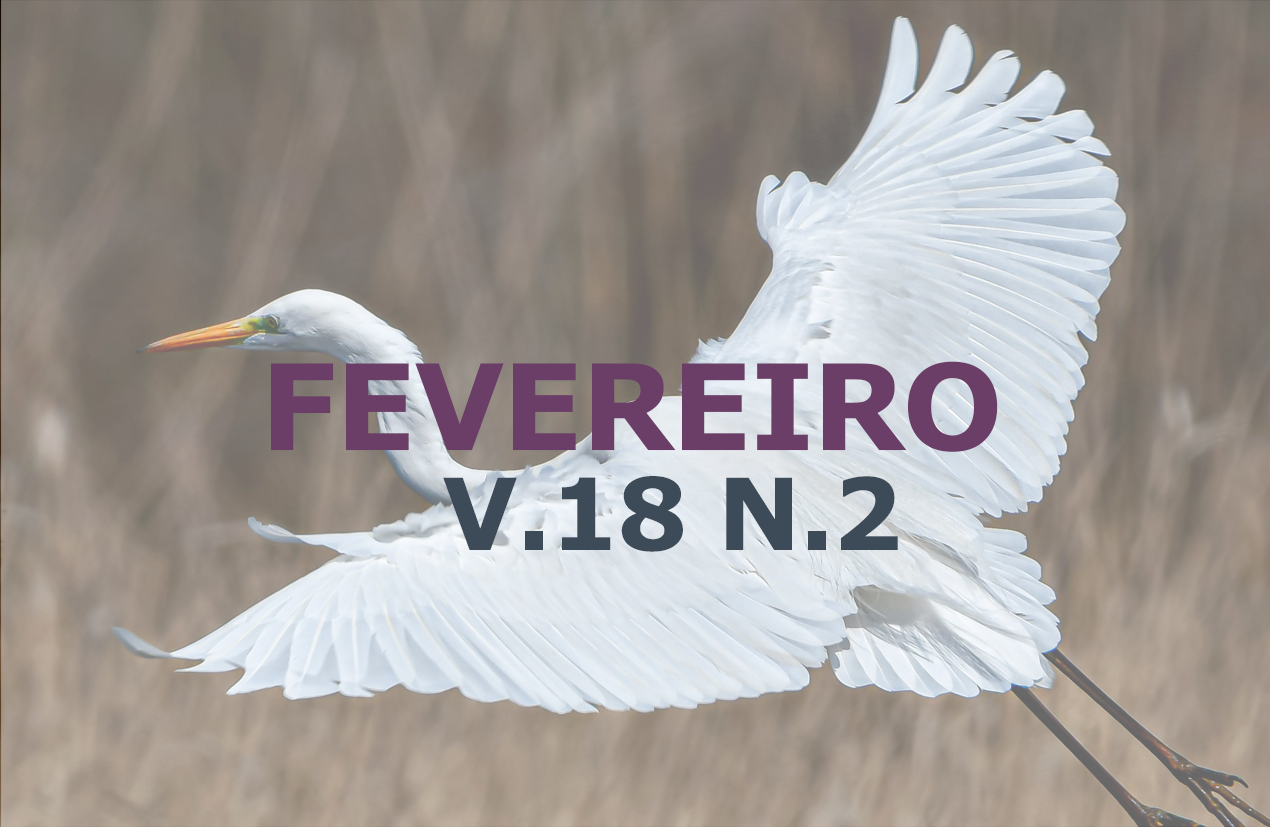Use of terminal colostomy in a dog with rectal obstructive neoplasm
Case report
DOI:
https://doi.org/10.31533/pubvet.v18n02e1555Keywords:
Aquesia, colostomy bag, dog, colostomy, obstructive neoplasmAbstract
Colostomy is a surgical procedure in which the intestinal route is diverted to the abdomen through an intestinal stoma sutured to the skin. It is rarely reported in veterinary medicine due to postoperative complications such as suture dehiscence, infections, dermatitis, fecal incontinence, and mainly the tutor's difficulty in adapting to handling the bag. Surgical indication exists in cases of obstructive neoplasms in the colon and rectum, with the purpose of increasing the animal's quality of life by enabling the evasion of fecal content. The objective of this study is to report a surgical case of colostomy in a canine, Labrador, female and 13 years of age, as a possible procedure to treat signs of obstruction resulting from rectal neoplasm and to present the favorable and unfavorable factors of the procedure. The technique utilized was terminal colostomy with access to the abdominal cavity through the left flank. Despite tumor involvement, difficulty in management with the colostomy bag and the emergence of peristomal lesions, treatment resulted in increased patient survival and improvement of clinical signs of obstruction, and can thus be considered effective in cases of patients who need to divert the fecal route.
References
Aleksiewicz, R., Kostrzewa, D., Lutnicki, K., Kostrzewski, M., & Bochenska, A. (2015). Temporary colostomy as a treatment of colonic torsion in dogs. Medycyna Weterynaryjna, 71(11), 709–712.
Cinti, F., & Pisani, G. (2019). Temporary end‐on colostomy as a treatment for anastomotic dehiscence after a transanal rectal pull‐through procedure in a dog. Veterinary Surgery, 48(5), 897–901. https://doi.org/10.1111/vsu.13152.
Dennis, M. M., McSporran, K. D., Bacon, N. J., Schulman, F. Y., Foster, R. A., & Powers E., B. (2011). Fatores prognósticos para sarcomas cutâneos e subcutâneos de tecido mole em cães. Patologia Veterinária, 48(1), 73–84.
Ferreira, B. C. A., Oliveira, D. S. M., Crispim, K. F. S., Pereira, L. N., Miléo, R. F., Leite, R. S., Martins, T. S., & Castro, V. M. (2023). Osteossarcoma apendicular canino: amputação e quimioterapia no tratamento oncológico. PUBVET, 17(4), e1379. https://doi.org/10.31533/pubvet.v17n4e1379.
Fossum, T. W. (2021). Cirurgia de pequenos animais (3ed.). Elsevier Editora.
Gheno, B. P. (2021). Sarcoma de tecidos moles em caninos: Relatos de casos.
Grapegia, F. Z., & Lima, B. R. (2017). Quimioterapia metronômica para o tratamento de tumor de células carcinomatosas de transição na região de trígono vesical em gato. PUBVET, 11(8), 793–801. https://doi.org/10.22256/pubvet.v11n8.793-801.
Hendrickson, D. A. (2010). Técnicas cirúrgicas em grandes animais (Vol. 1, p. 238 p.). Guanabara Koogan.
HistoPato (2022). Histopato Análise Anatomopatológica Veterinária (2022). Brasilia, DF. Brasil https://site.histopato.com/
Hong, Y.-J., Chae, H.-K., Yoon, S.-J., Shin, K.-I., Hwang, H.-M., Jung, J.-Y., Yun, S., Jang, B.-J., & Kweon, O.-K. (2022). A case of end-on colostomy in a dog suffering from dyschezia. Journal of Veterinary Clinics, 39(6), 384–389. https://doi.org/10.17555/jvc.2022.39.6.384.
Kumagai, D., Shimada, T., Yamate, J., & Ohashi, F. (2003). Use of an incontinent end‐on colostomy in a dog with annular rectal adenocarcinoma. Journal of Small Animal Practice, 44(8), 363–366. https://doi.org/10.1111/j.1748-5827.2003.tb00169.x.
Machado, G. G. (2023). Tratamento do sarcoma de tecidos moles em cães: uma revisão de literatura. Universidade Estadual Paulista (Unesp).
Moreira, L. P., Pedrosa, P. L., Ventura, B. P., Vieira, J. A. B., Marques, M. M., Vale, I. S., Costa, T. T., Silva, R. S., Cruz, I. C. K., & Andrade, P. S. C. (2023). Aspectos do emprego da eletroquimioterapia em cães e gatos: Revisão. PUBVET, 17(6), e1398. https://doi.org/10.31533/pubvet.v17n6e1398.
Oliveira, A. L. A. (2012). Técnicas cirúrgicas em pequenos animais. Elsevier Brasil.
Otero, C. V. L., Duarte, E. G., Oliveira, P. P., Oliveira, T. E., & Lima, B. T. A. R. (2021). Eletroquimioterapia em mastocitoma canino: Relato de caso. PUBVET, 15(3), 1–8. https://doi.org/10.31533/pubvet.v15n03a774.1-8.
Radiopatas Diagnóstico por Imagem (2022). Setor Norte, Brasilia – DF, Brasil.
Romano, F. S., Saiga, R., Figueiredo, R. C. C., Cristino, W. E., & Amaral, R. S. (2021). Adenocarcinoma de cólon diagnosticado via colonoscopia e tratado com quimioterapia metronômica em cão. PUBVET, 15(6), 1–4. https://doi.org/10.31533/pubvet.v15n06a838.1-4.
Samy, A., Abdalla, A., & Rizk, A. (2020). Evaluation of short-term loop colostomy in dogs using conventional and supporting subcutaneous silicone drain techniques. Journal of Advanced Veterinary and Animal Research, 7(4), 685–691. https://doi.org/10.5455%2Fjavar.2020.g468.
Silva, S. L. (2017). Megacólon secundário a avulsão da base da cauda em um cão. Universidade Federal do Tocantins.
Smeak, D. D. (2020). Colostomy and Jejunostomy. Gastrointestinal Surgical Techniques in Small Animals, 225–229. https://doi.org/10.1002/9781119369257.ch30.
Viana, F. A. B. (2014). Guia terapêutico veterinário. Editora Guanabara Koogan.
Downloads
Published
Issue
Section
License
Copyright (c) 2024 Maria Rakel Rodrigues Mesquita , Luisa de Alencar Lima, Camila Silva Lenza , Stheffanny Vieira da Silva, Celina da Fonseca Silva, Davi Francisco Santos

This work is licensed under a Creative Commons Attribution 4.0 International License.
Você tem o direito de:
Compartilhar — copiar e redistribuir o material em qualquer suporte ou formato
Adaptar — remixar, transformar, e criar a partir do material para qualquer fim, mesmo que comercial.
O licenciante não pode revogar estes direitos desde que você respeite os termos da licença. De acordo com os termos seguintes:
Atribuição
— Você deve dar o crédito apropriado, prover um link para a licença e indicar se mudanças foram feitas. Você deve fazê-lo em qualquer circunstância razoável, mas de nenhuma maneira que sugira que o licenciante apoia você ou o seu uso. Sem restrições adicionais
— Você não pode aplicar termos jurídicos ou medidas de caráter tecnológico que restrinjam legalmente outros de fazerem algo que a licença permita.





